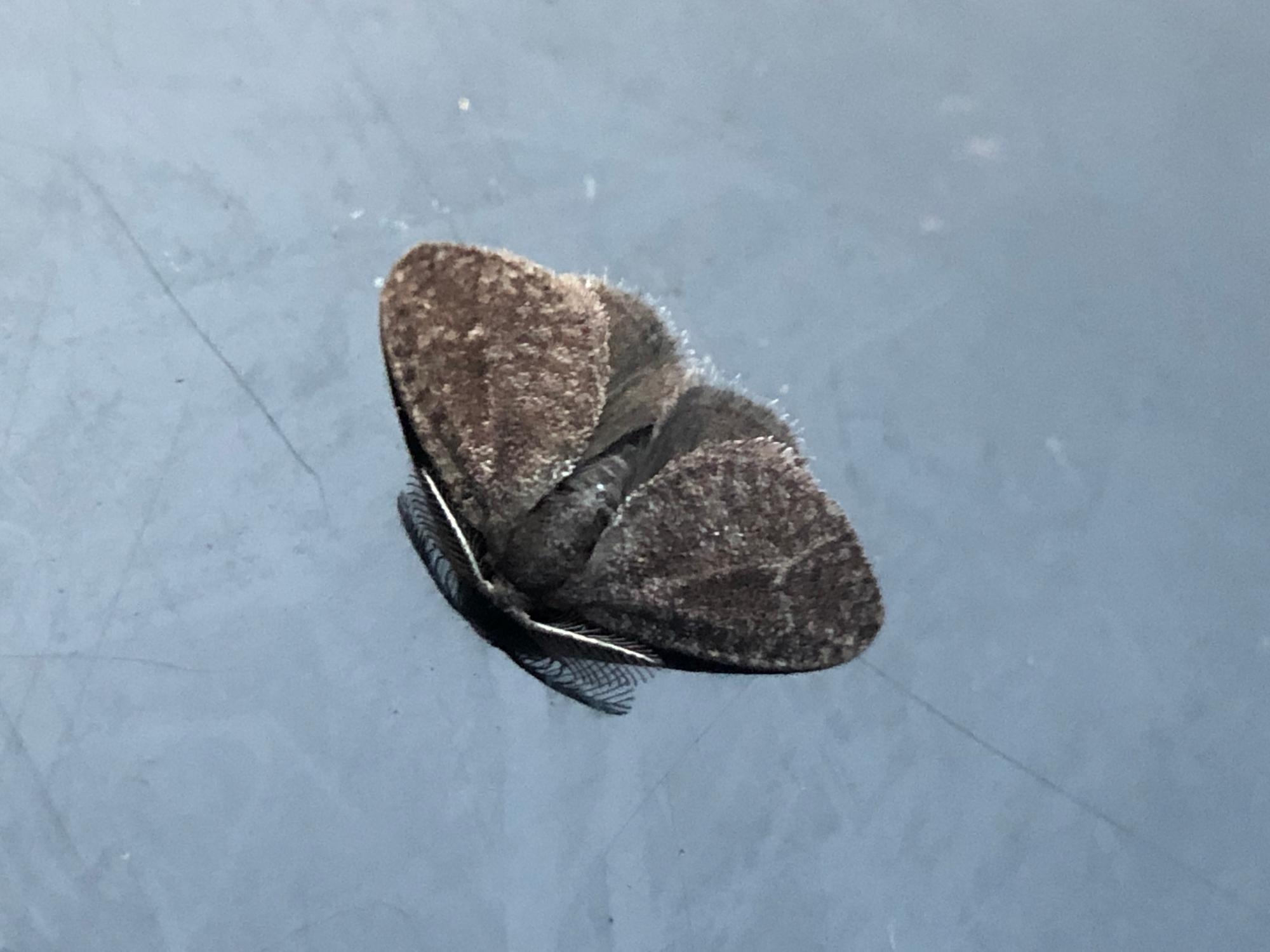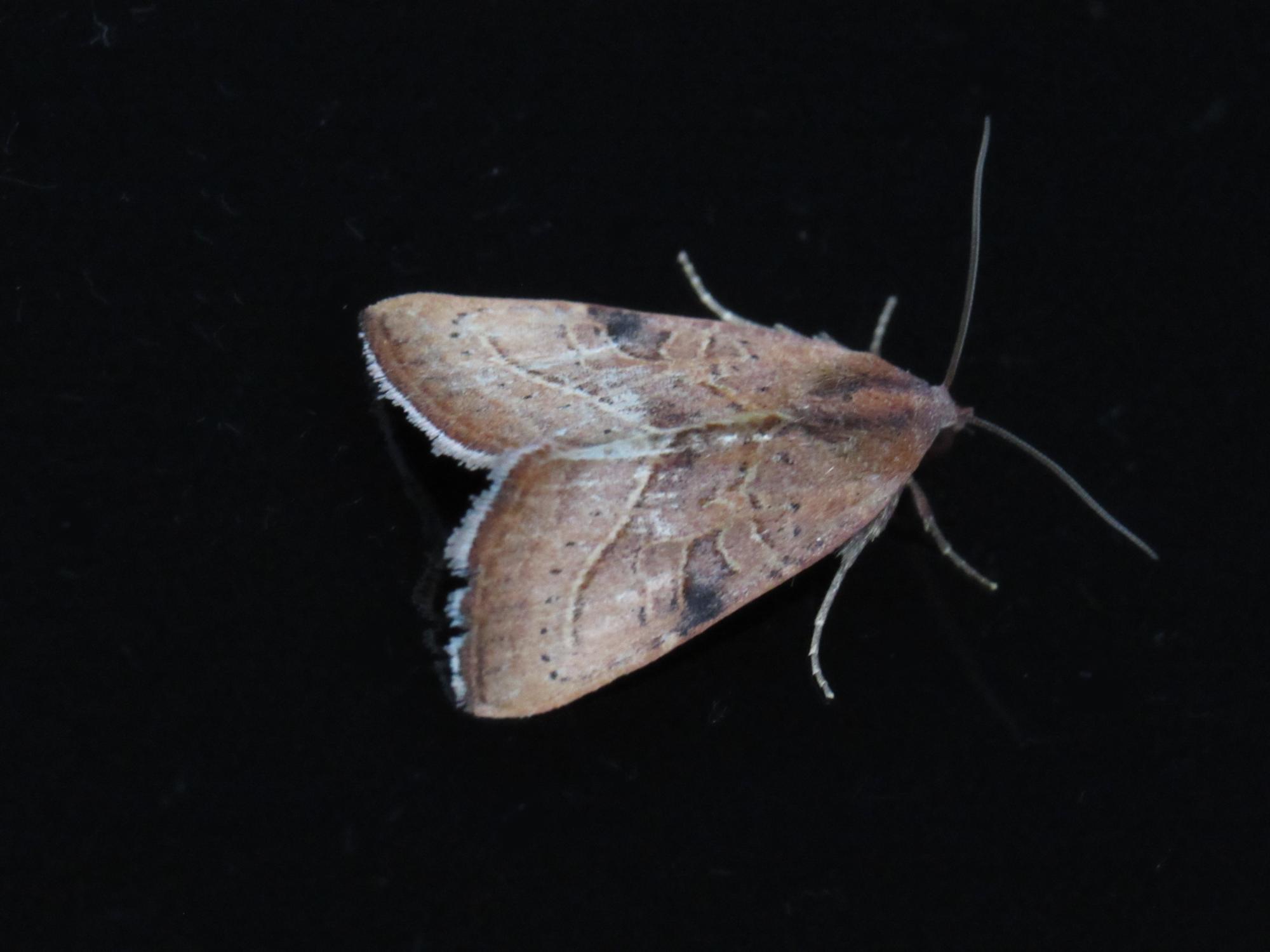MISCELLANEOUS SMALL MOTHS
This plume moth belongs to the genus Geina (Busck's/ Himmelman's complex). Again, they cannot be identified to species from photos.
Evergreen Bagworm Moth. This is the moth that emerges from those neat cases of leaves and evergreen needles that you see hanging on cedar trees and other shrubs. I did a double-take when I found this moth at my lights one morning. I couldn't decide at first if it was a moth or some type of fly, but the feathery antennae finally convinced me it was a moth. Photographed September 24, 2017.
Morning-Glory Plume Moth. There are many species of plume moths, but this is by far the most common one I see.
Female Wedgling Moth. Females have purple or maroon-colored wings.
Male Wedgling Moths are brown, with black, wedge-shaped marks on the edge of each wing.
Maple Callus Borer, another wasp mimic. I have found a few of these moths at my lights in May and June, and also in September.
Ironweed Clearwing Moth (also known as the Eupatorium Borer). Several moths in the Sesiidae family are excellent wasp mimics, but despite its fearsome appearance, this is a completely harmless moth. I have found several of these moths in July and August. They can be found at many locations, including Cox Arboretum, Spring Lakes Park, Beavercreek Wildife Area, and by the Great Miami River in Miamisburg.

Squash Vine Borer. I find them at my lights in June and July. The larvae feed on squash and pumpkin vines and related plants.
Planthopper Parasite Moth. These are tiny little moths. Their larvae are predatory, feeding on fluids from planthoppers. I find the adult moths at my lights in late August and early September.
Female Wedgling Moth with her wings spread.

Another male Wedgling. These moths are very common in our area. I find them every month from March through November.
Another Maple Callus Borer that came to my moth lights.
Artichoke Plume Moth. I have found a couple of these moths at my lights in April.
Black Duckweed Moth. These moths are insanely tiny. I measured this one at 4 mm in length from head to wingtip! Photographed at my moth lights on August 29, 2024.
Another Morning-Glory Plume Moth. These moths have a long flight period. I find Morning-Glory Plume Moths every month from February through November.
This plume moth is in the genus Hellinsia (species undetermined). There are many plume moths than cannot be told apart without dissection. Photographed May 21, 2024.
This moth is also in the genus Geina, but it is in the Grape/ Sheppard's complex.